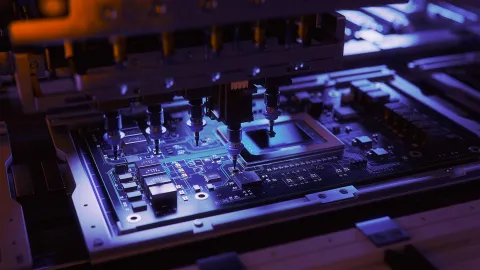Round Three of the PPP—The New Stimulus Bill Amendments

This post was originally posted by Dorsey, a member of Finastra’s network of state legal counsels for lending and compliance solutions
In an effort to achieve an agreement before the expiration of many of the CARES Act1 economic relief measures, on December 21, 2020, the U.S. Congress passed the Economic Aid to Hard-Hit Small Businesses, Nonprofits and Venues Act (the “Act”). The Act is included as Title III of the approximately 5,500-page Consolidated Appropriations Act, 2021 (the “Appropriations Act”), which adopts numerous stimulus and economic assistance provisions across a wide range of organizations and entities operating within the U.S. economy. The president signed the Appropriations Act (including the Act) into law on December 27, 2020.
This Alert is an initial analysis of the expanded Paycheck Protection Program (the “PPP”) — which was a material component of the CARES Act. The PPP was a novel policy tool when launched and proved to be an enormously popular one. When the initial $349 billion appropriated to the program was exhausted in a matter of days, Congress added $320 billion to the program through the Paycheck Protection Program and Health Care Enhancement Act adopted on April 24, 2020.2 Appropriated but unused funds from those earlier authorizations have been made available for the PPP loans authorized under the Act.3
The Act extends and continues the origination authority for the existing PPP from August 8, 2020 until March 31, 2021, with slightly modified rules for loan applications and loan forgiveness.
In addition, the Act creates a new second draw program (the “Second Draw PPP”) for smaller eligible entities (e.g., with 300 or fewer employees and a maximum loan amount of $2 million). Among other things, the Second Draw PPP will be available for borrowers under the original PPP (the “Original PPP”), provided that a smaller eligible entity has repaid its Original PPP loan.
Perhaps a result of the frenetic negotiations that are not unusual in contentious congressional compromises, the Act’s 48 separate provisions are not well organized, and in many cases are opaque in intent and meaning. To help guide an initial review and analysis of the amendments to the PPP, we have organized the Act’s provisions into the following categories: (a) the extension of the Original PPP; (b) the Second Draw PPP; (c) PPP small borrower provisions and enhancements; (d) PPP loan processing and administrative provisions; (e) lender liability protections; (f) miscellaneous provisions; and (g) SBA requirements, the effective date of the Act and the issuance of SBA regulations and guidance.
The Extension of the Original PPP Program
Despite criticism of the availability of the PPP to entities not needing federal assistance caused by the pandemic, the Original PPP remains essentially intact. Persons and entities that have failed to obtain a PPP loan prior to August 8, 2020 may once again apply for a PPP loan.4 As discussed below, except for: (a) prohibiting SEC-registered companies from obtaining a PPP loan; and (b) minor adjustments in regard to the loan application and loan forgiveness processes, businesses with 500 or fewer employees will continue to qualify for funding up to an amount not exceeding $10 million.5
The PPP Second Draw Program
The Act authorizes a new PPP loan program, the “Second Draw PPP,” which authorizes the origination of new PPP loans to smaller businesses in a maximum amount of $2 million.6 The Second Draw PPP reflects the intent to emphasize economic relief for smaller, local businesses.
In order to receive a Second Draw PPP loan, an eligible business must:
- Employ not more than 300 employees
- Have used or will use the full amount of its Original PPP loan, if applicable, and
- Demonstrate at least a 25 percent reduction in gross receipts calculated based upon first, second or third quarters of 2020 as compared to 2019.7
Eligible persons and entities under the Second Draw PPP are as follows:
- Businesses
- Certain nonprofit organizations
- Housing cooperatives8
- Veterans’ organizations
- Tribal businesses
- Self-employed individuals
- Sole proprietors
- Independent contractors, and
- Small agricultural cooperatives.9
The Second Draw PPP permits most eligible borrowers to receive a loan amount of the lesser of up to 2.5 times its average monthly payroll or $2,000,000, provided that a maximum employee loan limit is now set at 300 employees including affiliates (but eligible businesses with NAICS code 72 (Accommodations and Food Services) having more than one location may have up to 300 employees per location).
Importantly, the Act specifies that a Second Draw PPP loan may only be made to an eligible business that: (a) has previously received an Original PPP loan; and (b) has used 100% of the proceeds of the Original PPP loan before the Second Draw PPP loan proceeds are disbursed.10 Only one Second Draw PPP loan may be obtained by an eligible borrower.11
An important exception to the general rule on the maximum loan amount calculation applies to entities in industries assigned to NAICS code 72 (Accommodations and Food Services), which entities may receive loans of up to the lesser of $2 million or 3.5 times their average monthly payroll costs.
Permitted expenses that may be forgiven under the Second Draw PPP include the same permitted expenses under the Original PPP (i.e., defined payroll costs12, as well as covered mortgage, rent, and utility payments), but also now include covered operations expenditures, covered property damage costs, covered supplier costs, and covered worker protection expenditures incurred during the covered period.13
Smaller Borrower PPP Provisions
The Act contains useful improvements for processing smaller Second Draw PPP loans, which the Act defines as a Second Draw PPP loan in an amount of $150,000 or less.
In that regard, the Act creates an expedited loan application and certification process for PPP loans not exceeding $150,000—which must include a one-page certification form to be created by the SBA for use at the time of loan application.14 Significantly, a borrower seeking loan forgiveness for a PPP loan not exceeding $150,000 is not required to submit additional documentation supporting the new short-form certification (except in the case of the applicability of another federal or state law or audit requirement).
In addition, the mandatory documentation language in the CARES Act for smaller PPP loans of $150,000 or less was amended to allow the SBA greater flexibility to determine documentation when determining eligibility.15
Administrative and PPP Loan Processing
The Act clarifies many existing PPP loan rules and adopts changes that industry participants have criticized as impediments to the efficient operation of the PPP.
For the Second Draw PPP, the Act establishes a three-tiered structure for lender compensation for PPP loans originated after the effective date of the Act:
- For loans up to $50,000, the processing fee is set at the lesser of 50 percent of the principal loan amount or $2,500
- For loans between $50,000 and $350,000, the processing fee is set at five percent of the principal loan amount, and
- For loans above $350,000, the processing fee is set at three percent of the principal loan amount.16
As noted above, the Act expands on the categories of forgivable business-related expenses under the PPP, and now includes:
- Payments for any software, cloud computing, and other human resources and accounting needs
- Certain property damage costs relating to property damage due to public disturbances that occurred during 2020 that are not covered by insurance
- Specified supplier costs that are essential to a business’ operations, including costs incurred during (or prior to) the covered period of a PPP loan that are essential to the recipient’s operations at the time the expenditure was made, and
- Covered worker protection expenditures, including capital expenditures, personal protective equipment and adaptive investments intended to comply with state and federal health and safety guidelines relating to COVID-19.17
The Act attempts to correct certain origination problems experienced by borrowers and lenders under the Original PPP. Among other things, the Act, together with the Appropriations Act:
- Exempts loan forgiveness under the PPP from inclusion in ordinary income of a PPP borrower18
- Allows a borrower to elect a covered period ending at the point of the borrower’s choosing—between 8 and 24 weeks after origination19
- Expands the seasonal period for calculation purposes to any 12-week period between February 15, 2019 and February 15, 202020
- Clarifies that the interest rate on all PPP loans is non-compounding and non-adjustable21
- Repeals a provision in the CARES Act that required recipients of a PPP loan to deduct the amount of any EIDL loan from the PPP loan forgiveness amount22
- Prohibits publically traded companies from obtaining PPP loans23
- Extends the covered period for the PPP through March 31, 2021 (which provides additional flexibility for a PPP borrower when utilizing PPP funds for approved costs and expenses)24
- Clarifies the applicable period for employees’ salaries of $100,000 on an annualized basis as prorated during the period in which compensation is paid or incurred, and25
- Clarifies that a business or organization that was not in operation on February 15, 2020 is not eligible for either a PPP loan under the Original PPP or the Second Draw PPP.26
Lender Liability Protections
Based upon thinly veiled threats by the SBA in the past several months to take possible enforcement action against PPP lenders, the Act contains welcome statutory liability protections for the lender community, as follows:
PPP Lender Hold Harmless—Notwithstanding clear language in regard to the limited obligations of a lender when processing a PPP loan, the SBA and Treasury have previously issued statements that could be interpreted as potentially creating lender liability for errors or fraud in the PPP origination and loan forgiveness processes.
The Act substantially resolves these concerns by stating that the government cannot take enforcement action, including the imposition of penalties, against a PPP lender when the lender reasonably relies upon any certification or documentation submitted by a borrower. The standard for liability protection is that: (a) the lender acted in good faith when complying with its obligations regarding the loan origination or forgiveness processes; and (b) all relevant federal, state, local and other statutory and regulatory requirements were satisfied.27
Lender Bankruptcy Code Protections—In light of the experience by the PPP lender community that many PPP borrowers have been forced to seek bankruptcy protection, in order to afford additional protection to taxpayers and participating PPP lenders, the Act grants a lender a superpriority claim in the bankruptcy process when a PPP loan is obtained following the filing of a bankruptcy petition.28
Miscellaneous
The Act contains numerous special provisions for both individuals and groups, and addresses unique circumstances not necessarily applicable to all participants in the PPP in general. These provisions include, among others:
- Farmers and Ranchers—The Act authorizes a special calculation of the maximum loan amount for certain farmers and ranchers who operate as sole proprietors, independent contractors and self-employed individuals29
- Conflicts of Interest—The Act: (a) clarifies the applicability of conflict of interest rules for borrowing entities owned or partially owned by certain senior federal officials; (b) prohibits the origination of new PPP loans to a covered entity (i.e., an entity that is owned in whole or in part by a senior federal official); and (c) requires a covered entity to identify itself to the SBA when it applies for loan forgiveness30
- Shuttered Venue Operators—The Act authorizes $15 billion for the SBA to make grants to eligible live venue operators or promoters, theatrical producers, live performing arts organization operators, museum operators, motion picture theatre operators, or talent representatives who demonstrate a 25 percent reduction in revenues in 2020 (or 2021) when compared to the same quarter in 2019.31 These provisions—which are non-credit grants of operating funds—are intended to address a critical need to maintain the operational capability for the performing arts and related entities. The Act prohibits eligible entities that receive a grant under the Shuttered Venue Operator Grants program from obtaining a Second Draw PPP loan32
- Farm Credit Institutions—The Act authorizes institutions operating under the Farm Credit Act of 1971 to originate PPP loans33
- CARES Act Waiver—The Act extends the CARES Act waiver for Women’s Business Center matching funds through June 30, 202134, and
- Modifications to Other SBA Loan Programs—In addition to the modifications made to the operation of the PPP, the Act makes numerous amendments to other smaller loan amount SBA programs, including, among others, the Section 7(a) lending program, the EDIL program, the Section 504 program and the Community Advantage and the Microloan programs, and increases the amount of funds available under these loan programs, provides for the resumption of payments of principal and interest by the SBA on qualifying loans under these sections for between three and eight months, and homogenizes many of the operating requirements of these programs with those of the PPP.
SBA Requirements, the Effective Date of the Act and the Issuance of SBA Regulations and Guidance
The provisions of the Act are effective as of December 27, 2020 (i.e., the date the president signed the Appropriations Act).35 However, the Act states that the SBA must issue regulations no later than 10 days following the effective date of the Act, and waives certain notice and comment requirements of the Administrative Procedure Act.36
The Act contains typical instructions that are directed to a federal agency responsible for implementing a new or revised statute, such as complying with GAO oversight requests, etc.
Though the SBA is capable of issuing an initial set of regulations within the 10-day time period, it is likely that a fulsome regulatory process may require additional time to complete. Among other things, integrating the Second Draw PPP authorities into the existing PPP regulatory structure will be complicated. For example, the Act contains numerous provisions that: (a) applies the new PPP rules to Original PPP application and loan forgiveness rules; (b) applies some of the new PPP rules to Original PPP loans, but only to the extent the loan has not been forgiven; and (c) excludes from coverage Original PPP loans to the extent they have been forgiven. At a minimum, PPP lenders should insist that the SBA provide clear interpretative guidance in regard to the integration of the operational requirements of the Original PPP and the Second Draw PPP.37 Moreover, new forms and certifications will have to be drafted and promulgated by the SBA, as well as directions for processing Second Draw PPP loans and the PPP loan forgiveness process.
* * *
When reviewing this Alert, please note that hurriedly negotiated compromises such as the Act may frequently include either errors in drafting or intent (or both). Accordingly, additional guidance regarding the scope of the Act may be forthcoming in the next several weeks—particularly from the SBA.
Dorsey attorneys are available to provide updates as they become available.
1 Public Law No. 116-136 (March 2020).
2 Public Law No. 116-139 (April 2020).
3 Section 323 of the Act. An aggregate amount of $806.5 billion has been appropriated; of that amount, several SBA programs other than the PPP have been allocated additional funds (e.g., set-asides) within that aggregate amount.
4 Section 342 of the Act.
5 Many of the adjustments to the PPP terms and conditions applicable to the Original PPP are discussed below and will likely require the SBA to modify its PPP regulations and guidance documents. For example, the SBA has announced its intention to analyze new applications for an Original PPP loan through an improved web portal prior to approving the same.
6 Section 311 of the Act.
7 Note that this requirement appears to be an attempt to eliminate otherwise eligible borrowers that have not experienced demonstrable economic loss as a result of the pandemic from participating in the PPP. Additional calculation flexibility is provided for eligible entities not in operation in 2019.
8 Section 316 of the Act.
9 Section 311 of the Act. Ineligible entities include entities listed in the SBA’s regulations at 13 C.F.R. 120.110, except for entities included in that regulation that have otherwise been made eligible by statute or guidance, such as certain nonprofits and religious organizations. In addition, certain other business entities are ineligible, including lobbying organizations, entities representing certain foreign governmental interests (including entities affiliated with entities in the People’s Republic of China), senior federal officials and publically traded companies, as well as recipients of grants under the Shuttered Venue Operators Grant program.
10 Section 311 of the Act.
11 The effect of this limitation is to require that a business that has not previously received a PPP loan must apply and qualify under the Original PPP guidelines.
12 Section 308 of the Act clarifies that employer-provided group insurance benefits are included in payroll costs, including group life, disability, vision, or dental insurance (and applies to PPP loans originated on or before the date of the Act, including loans that have been forgiven).
13 The current 60/40 cost allocation between payroll and non-payroll costs in order to receive full forgiveness will continue to apply.
14 Section 307 of the Act. The SBA has 24 days to draft and promulgate the new certification form. In addition, Section 307 requires the SBA to provide more transparency in respect to the loan forgiveness process for PPP loans exceeding $150,000, including regular reports to Congress.
15 Section 335 of the Act.
16 Section 311 of the Act. Section 340 of the Act contains a slightly different schedule of fees, which applies to the Original PPP for which the SBA has not yet provided reimbursement. Further, the Act also clarifies (in what may be more an aspirational directive than obligation) that lender reimbursement by the SBA for loan origination fees must be made by the SBA no later than five days post-disbursement.
17 Section 304 of the Act. This provision allows loans made under the Original PPP on or after the enactment of the Act to be eligible to utilize the expanded forgivable expenses, except for borrowers who have already had their PPP loans forgiven.
18 Section 248 of the Appropriations Act. The Appropriations Act contains numerous IRS Code modifications, (many of which will be addressed in a separate Dorsey Alert). For example, after the CARES Act was enacted, the Treasury took the controversial position that expenses paid for with PPP loan proceeds could not be deducted from taxable income if the loan was ultimately forgiven. The Appropriations Act makes clear that these expenses are in fact deductible.
19 Section 306 of the Act.
20 Section 336 of the Act. This provision applies to Original PPP loans that have not been forgiven.
21 Section 339 of the Act.
22 Section 333 of the Act. This provision appears to be retroactive, and permits an Original PPP borrower to now receive as part of loan forgiveness the amount of an EIDL loan that was deducted from the Original PPP loan forgiveness calculation.
23 Section 342 of the Act.
24 Section 343 of the Act. The extension of the covered period may practically delay the filing of numerous applications for PPP loan forgiveness until the second quarter of 2021.
25 Section 344 of the Act.
26 Section 310 of the Act.
27 Section 305 of the Act. The language of Section 305 states that this limitation of liability is retroactive to apply to Original PPP loans in addition to Second Draw PPP loans.
28 Section 320 of the Act. In order for these bankruptcy protections to become effective, the SBA is required to issue a written determination to the Director of the Executive Office of the United States Trustees that, among other things, establishes eligibility requirements for obtaining a PPP loan. This authority will expire two years from the effective date of the Act.
29 Section 313 of the Act. The language of this provision implies that covered farmers and ranchers with PPP loans may be able to increase the amount of the loan based upon this amended calculation (unless the PPP loan has already been forgiven).
30 Section 322 of the Act.
31 Section 324 of the Act.
32 Section 324 also prohibits otherwise eligible grant recipients from participating if is a publically traded company. (Large publically traded movie theater chains and similar large entertainment businesses have been vocally objecting to their exclusion from this grant program based upon this exclusion.).
33 Section 314 of the Act.
34 Section 345 of the Act.
35 Section 348 of the Act.
36 Section 303 of the Act.
37 In addition to the need for lender guidance SBA regulatory guidance will also affect borrowers.
For example, to the extent that SBA regulations expand the amount of a PPP loan that is available, Section 312 of the Act permits a borrower to apply for a supplemental loan amount, provided that the PPP loan has not been forgiven.


